Rain boots are usually an integral part of a child's shoe closet. Although they are shoes to be worn occasionally, it's still nice when children are comfortable in rubber boots and when movement is restricted as little as possible by the shoe when jumping in puddles, running through wet grass or mushrooming in the woods.
In our range you will find rain boots from different manufacturers, with different proportions, weights; colourful and decent... Choose the ones that will be perfect for you.
Comparison of basic parameters of rain boots
The summary table shows the most frequently taken into account parameters when choosing any shoes. In the case of rubber boots, it is necessary to take into account that it is a shoe that cannot be tightened and therefore practically never fits optimally.
|
|
BRAND |
TOE BOX SHAPE |
HEEL |
INSTEP |
FLEXIBILITY |
WEIGHT |
|
|
WIDE |
dominant big toe/straight toes |
narrow/narrow |
average |
well flexible |
soft |
345 g |
|
|
dominant big toe/straight toes |
average/average |
average |
well flexible |
soft |
347 g |
||
|
curls in at the big toe/descending toes |
wide/wide |
high |
well flexible in walking direction/rigid longitudinally |
slightly firmer |
112 g |
||
|
AVERAGE |
slightly curls in at the big toe/ descending toes |
average/average |
average |
well flexible |
very soft |
222 g |
|
|
curls in at the big toe/descending toes |
average/average |
average |
slightly sturdy |
soft |
339 g |
||
|
NARROW |
slightly curls in at the big toe/ descending toes |
narrow/narrow |
average |
slightly sturdy |
soft |
327 g |
Shapes of soles
Enough space in the shoe is important for comfort. Look at the shape of the child's foot, and the shape of the shoe, which should follow the foot as closely as possible. Such a shoe fits best, does not press or overfill anywhere.
The soles are photographed on rain boots, size 28, but we've added a photo of the Bundgaard Cover, which only goes up to size 23. They are the softest, lightest and most flexible boots on the market, great for little kids.
The Bisgaard brand has a different toe shape on the smaller sizes, they are straighter / wider at the toe than the larger sizes where the toe is narrower.
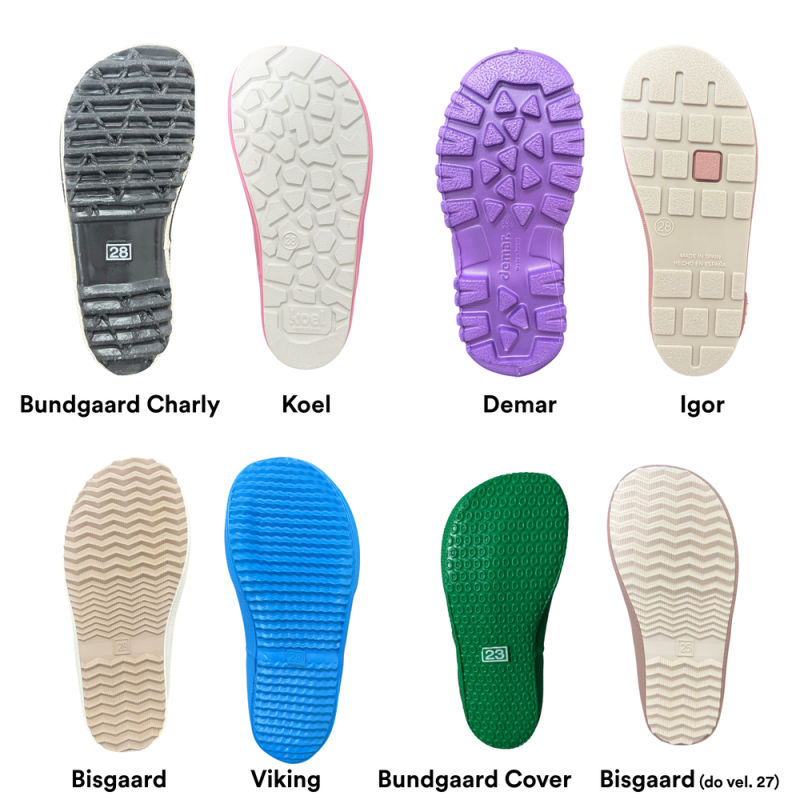
Bundgaard
- anatomically shaped toe, suitable for dominant big toe
- ideal shoe for the fin-shaped foot, narrowing in the heel and ankles
- average in the instep
- well flexible in the direction of walk, a little stiffer under the heel
- sole approx. 4 mm + 3 mm pattern
- zero drop, but the sole is not molded completely flat, it rocks slightly
- inside a nice thin layer of cotton
- removable 3 mm foam insole
- reflective elements
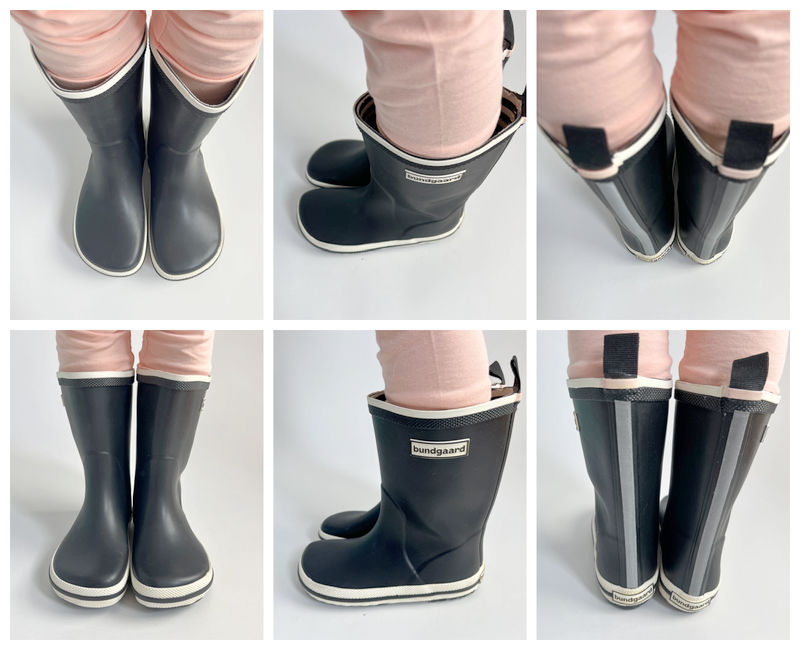
Koel
- anatomically shaped toe, suitable for dominant big toe
- ideal shoe for the overall wider foot
- slightly wider in the heel and ankle compared to the Bundgaard
- for the average ankle
- well flexible laterally and longitudinally
- zero drop, ideally flat sole
- sole approx. 4 mm + 2 mm tread pattern
- inside a pleasant thin layer of cotton
- removable 2 mm foam insole
- reflective element behind the heel
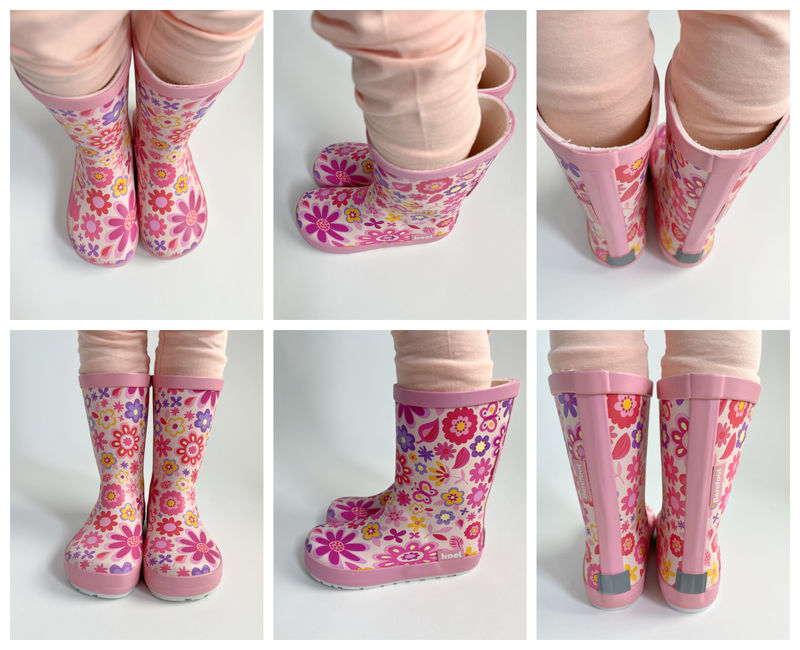
Igor
- toe roomy, slightly curled at the big toe, not ideal for dominant toe
- for the average foot in the instep, heel and ankle area
- well flexible laterally and longitudinally
- zero drop, outsole ideally flat
- sole approx. 4 mm + 2 mm pattern
- inside a thin layer of synthetic fabric
- removable 3 mm foam insole
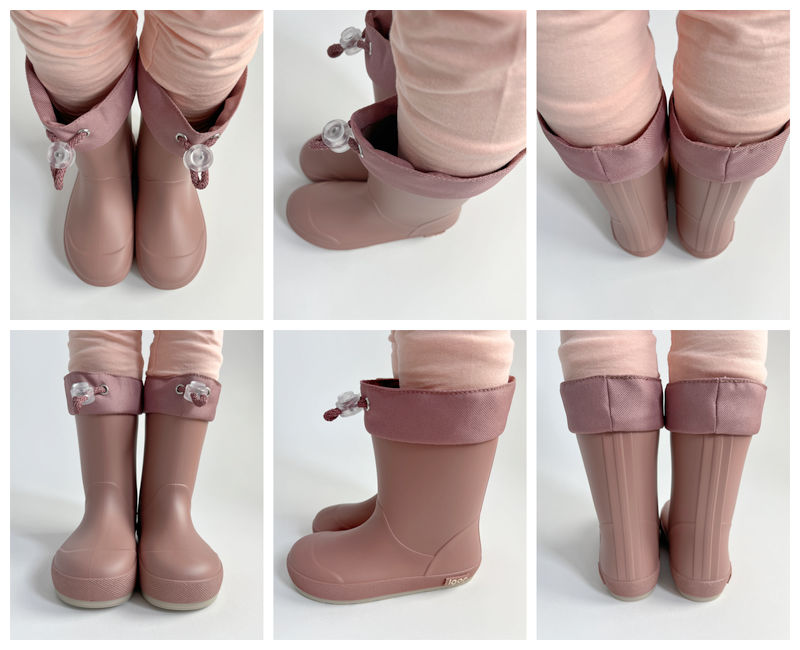
Demar
- quite spacious, but rather round tip
- higher in the instep
- suitable for overall chubbier feet, more room around the ankle
- well flexible in the direction of walking, stiffer under the heel
- sole a little more robust, slightly higher under the heel
- sole approx. 4 mm + 3 mm pattern
- removable merino wool insole inside
- tightening and reflective element around the perimeter of the shoe
- excellent thermal insulation properties, also suitable for cold weather as snowshoes
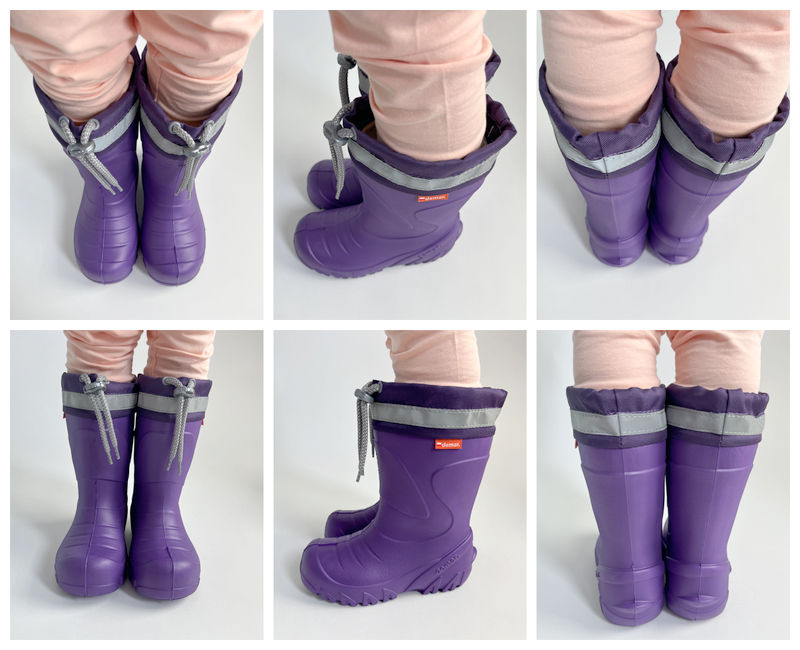
Bisgaard
- up to size 27 rather anatomically shaped toe, only slightly curled at the big toe, larger sizes narrow earlier and are not suitable for dominant big toe
- shoe for the average foot in the instep, heel, ankle
- well flexible in the direction of walking, but stiffer longitudinally
- zero drop
- sole approx. 4 mm + 3 mm pattern
- inside a nice thin layer of cotton
- removable 2 mm foam insole
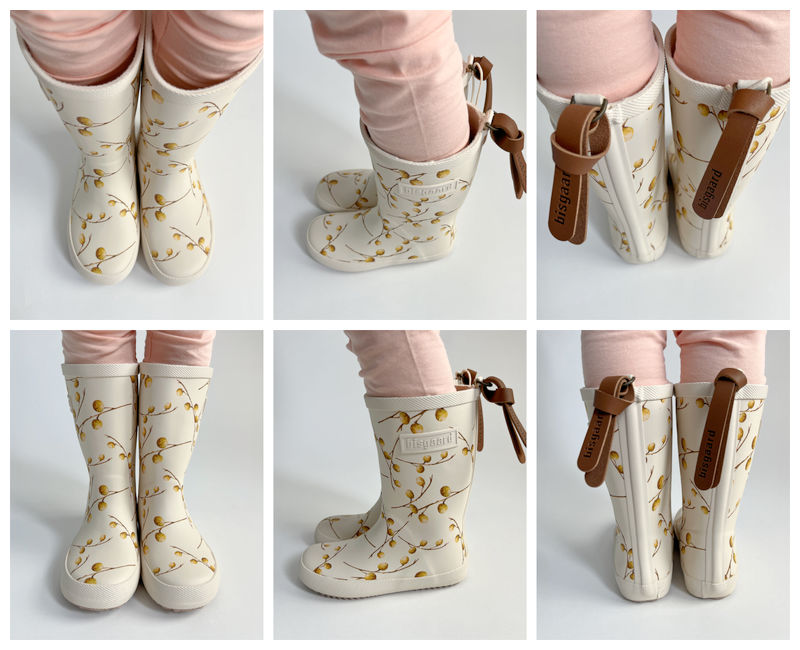
Viking
- anatomically shaped toe, slightly curled at the toe, suitable for a narrower foot and not a dominant big toe
- ideal shoe for the overall slimmer foot, including the ankle and heel
- well flexible in the direction of gait, stiffer longitudinally
- zero drop
- sole approx. 4 mm + 3 mm pattern
- inside synthetic microfleece
- removable 2 mm foam insole
- reflective element behind the heel
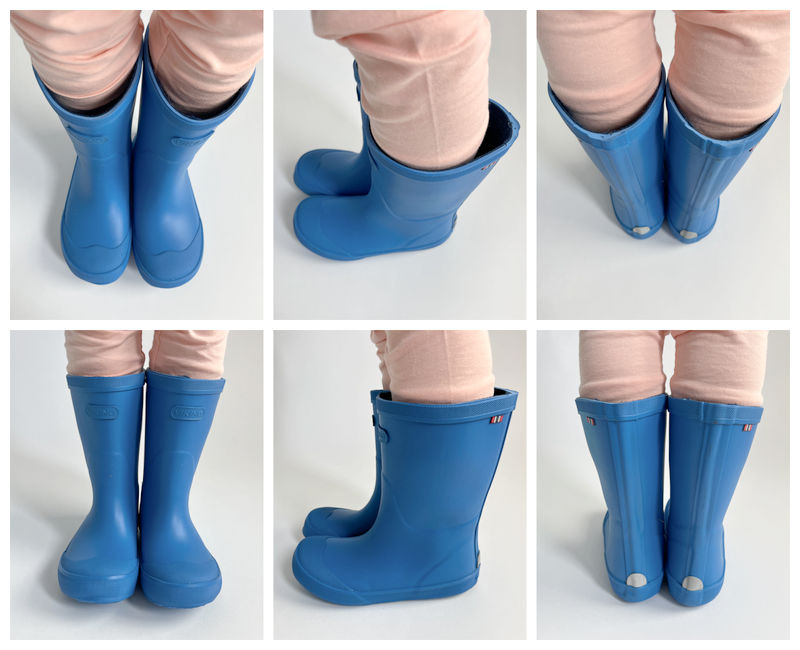
Still hesitating? Contact us, we will be happy to help you with your choice!
